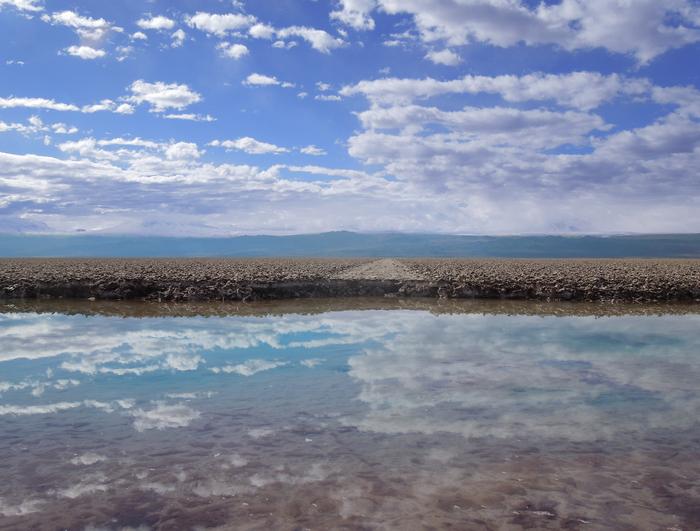New research from UMass Amherst has revealed alarming discrepancies in the commonly accepted models used to estimate freshwater availability for lithium extraction in the Lithium Triangle, which includes parts of Chile, Argentina, and Bolivia. This region is pivotal in supplying over half of the world’s lithium resources, essential for the burgeoning green energy market. As electric vehicle production accelerates, and the demand for lithium rises exponentially—expected to increase fortyfold within the next few decades—understanding the region’s water resources is not just an academic concern but a pressing environmental issue.
The study emphasizes that current estimations of freshwater available for mining are vastly overinflated. Historically, scientists have relied on two primary global water models, which suggest that the influx of freshwater into the Lithium Triangle’s basins amounts to between 90 and 230 millimeters per year. However, researchers found that these figures do not accurately represent the reality. Through a comprehensive study of 28 basins, the researchers established their own model—named the Lithium Closed Basin Water Availability model, or LiCBWA—that delivered sobering results.
The findings indicate that the average freshwater inflow, based on LiCBWA, ranges between 2 to 33 millimeters per year for the various basins studied, with an alarming average of just 11 millimeters per year. This stark contradiction raises significant concerns about the sustainability of lithium extraction practices, especially as current mining operations often exceed these available freshwater resources. In light of these revelations, the need for immediate action among local communities, regulators, and the lithium mining industry becomes critical.
Lithium’s unique characteristics complicate its extraction. As the lightest metal, it readily reacts with water and exists predominantly in a brine form deep underground. It is typically found in layers of volcanic ash, where it leeches into groundwater through rain or snowmelt. This creates dense brine-filled lagoons below layers of fresh surface water, often home to diverse ecosystems and indigenous communities that depend on these fragile habitats. The study highlights how mining practices threaten both ecological balance and the traditional lifestyles of indigenous peoples.
The lead author, Alexander Kirshen, stressed the methodological challenges faced by researchers due to the extreme aridity and remoteness of the Andes mountains, where the Lithium Triangle is situated. With limited monitoring stations available to assess streamflow and precipitation effectively, understanding the region’s water dynamics requires innovative modeling approaches. The LiCBWA model represents a significant step toward more accurately assessing available water resources for sustainable mining practices.
Moreover, the transition from traditional lithium extraction methods to more modern techniques poses additional challenges. Many sites employing direct lithium extraction (DLE) consume significantly more water than previous evaporative methods. In fact, the study showed that approximately 56% of DLE facilities in the region use more water than their older counterparts, with some utilizing ten times the water needed for evaporation-based processes. This inconsistency highlights an urgent need for the lithium industry to evaluate its water usage patterns critically.
The research underscores the importance of collaboration between scientists, local communities, and industry stakeholders to develop sustainable water management practices. A cooperative effort is essential not only to minimize water consumption but also to integrate effective monitoring systems to accurately gauge changes in precipitation, streamflow, and groundwater levels. Such collaborations are crucial in generating a more precise understanding of the hydrology surrounding lithium extraction.
As the lithium market continues to grow, the researchers advocate for immediate prioritization of water sustainability. The alarming projections related to water scarcity serve as a crucial warning for future mining practices, encouraging an essential reevaluation among regulators and corporations directly involved in lithium extraction. Protecting the critical ecosystems of the Lithium Triangle should not only prioritize profitability but also ensure the livelihoods of local communities are safeguarded.
In addition to the ecological considerations, the ethical implications of lithium mining extend into the economic realm. With indigenous peoples’ rights often overlooked, there must be efforts to include their voices in discussions about resource management and extraction practices. Sustainable lithium mining cannot be achieved without integrating the knowledge and rights of communities that have lived in and cared for the region for generations.
In conclusion, as the world transitions to cleaner energy sources, reevaluating our relationship with natural resources becomes ever more critical. This pivotal research from UMass Amherst presents a fundamental challenge to the existing models of lithium extraction, suggesting that approaches must adapt swiftly to ensure that the environmental integrity of the lithium-rich landscapes is preserved while still supporting the global shift toward sustainable energy. This balance will ultimately determine the viability of lithium mining in the Lithium Triangle and its implications for both local communities and the international community.
Subject of Research: Freshwater inflow for lithium extraction in the Lithium Triangle
Article Title: Freshwater inflows to closed basins of the Andean plateau in Chile, Argentina, and Bolivia
News Publication Date: March 26, 2025
Web References: Communications Earth and Environment
References:
Image Credits: Credit: UMass Amherst
Keywords
Lithium, freshwater availability, mining sustainability, environmental impact, lithium triangle, UMass Amherst research, DLE vs. evaporative concentration, indigenous rights, ecological balance, water scarcity.




